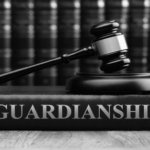Proper Venue For A North Dakota Guardianship: Understanding The Legal Framework
In North Dakota, guardianship is a legal arrangement where a court appoints a guardian to make decisions for someone who is unable to make those decisions themselves. This can involve minors or adults who are incapacitated due to age, illness, or disability. If you are interested, you can also read about guardianships and conservatorships in the following articles:
- What Happens If I Don’t Have a Health Care Directive
- The Battle Between a Power of Attorney and Guardianship! Which One Is Right For You?
- The Steps of a Guardianship
- Becoming A Certified Guardian Under Rule 59, Starting March 1, 2018
- I Have Been Appointed Guardian, Now What?
- How Can a Guardian Ad Litem Help Me With the Adult Guardianship Process
- Guardianship vs Conservatorship: What You Need and When
- The Rights of a Ward In A Guardianship
- Crossing State Lines: Transferring Guardianships and Conservatorships Between North Dakota and Minnesota
- Minnesota Guardianship Annual Reporting Requirements
One of the most important procedural steps in seeking a guardianship is ensuring the petition is filed in the proper venue. The venue refers to the specific court where the guardianship case should be heard and decided. This determination is governed by specific statutes within the North Dakota Century Code (N.D.C.C.).
General Rule For Venue
The proper venue for filing a guardianship petition is established by N.D.C.C. § 30.1-28-02, which is part of North Dakota’s Uniform Probate Code. This statute specifies that the venue depends on where the individual (referred to as the “proposed ward”) resides or is currently located and where the proposed ward is expected to remain during the pendency of the proceedings.
According to N.D.C.C. § 30.1-28-02, the proper venue for an adult guardianship is generally the district court in the county where the proposed ward resides. If the proposed ward does not reside in North Dakota but is physically present in the state, the petition may be filed in the county where the individual is found. This ensures that the court overseeing the guardianship is close to the proposed ward’s location, allowing for easier management of the ward’s care and affairs.
For example, if an elderly individual suffering from dementia is living in Cass County, a family member seeking guardianship must file the petition in Cass County District Court. If that individual resides in another state but is currently in North Dakota for medical treatment, the petition could be filed in the county where the hospital or facility is located.
Conclusion
Selecting the proper venue for a guardianship case in North Dakota is crucial to ensuring the legal process runs smoothly and in compliance with state law. The appropriate venue is generally the district court in the county where the proposed ward resides or is physically present. These requirements, set out in N.D.C.C. § 30.1-28-02, are designed to streamline the guardianship process, and ensure that courts with appropriate geographical ties to the ward handle the case. Understanding these rules is essential for petitioners seeking to establish a guardianship and ensure the best interests of the ward are protected.
If you find yourself in a situation where you need assistance to help your family member or friend, give us a call. We can help you determine whether a guardianship is necessary or if we can accomplish the same goals by alternative means.
Contact SW&L
If you feel you have a loved one who may need a guardian or conservator, please contact us!










